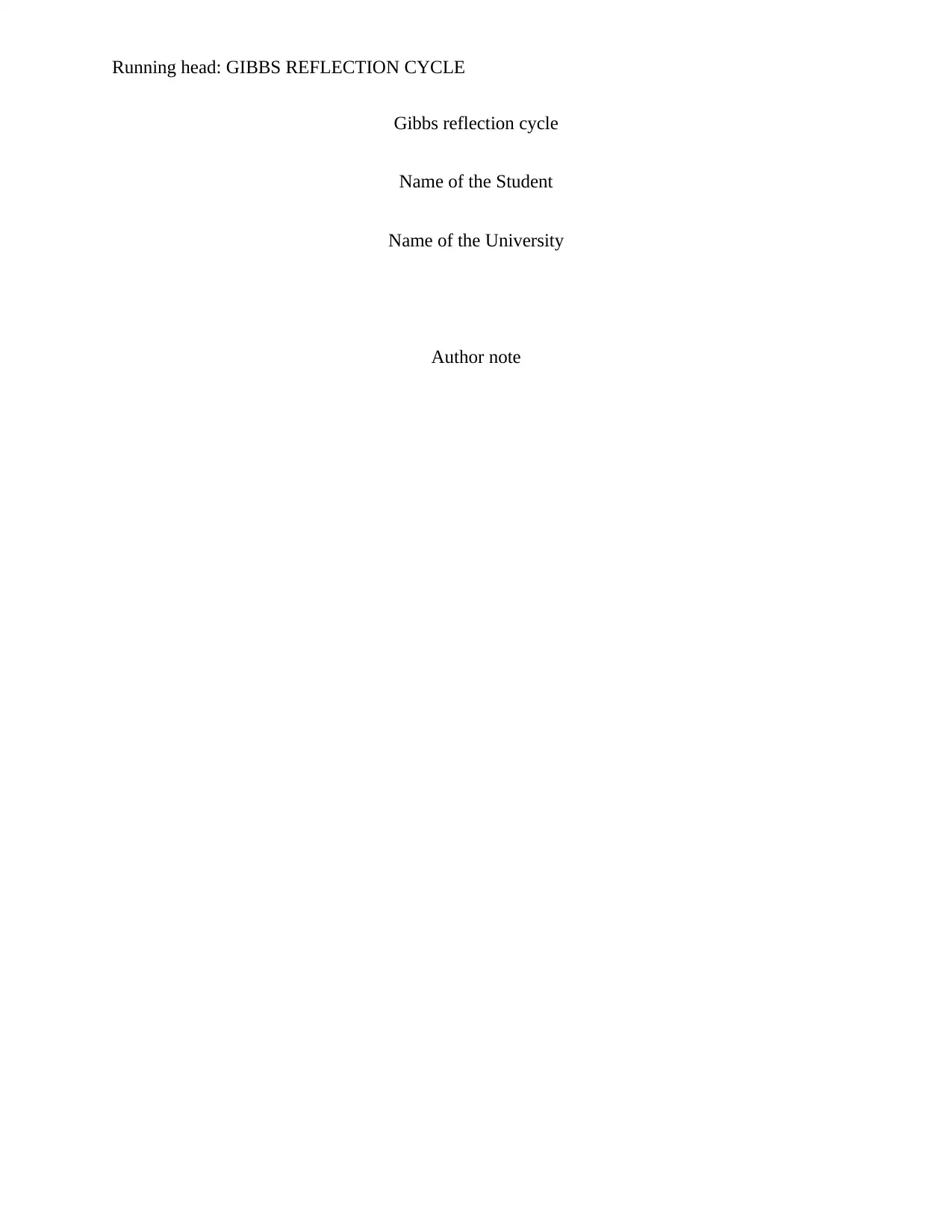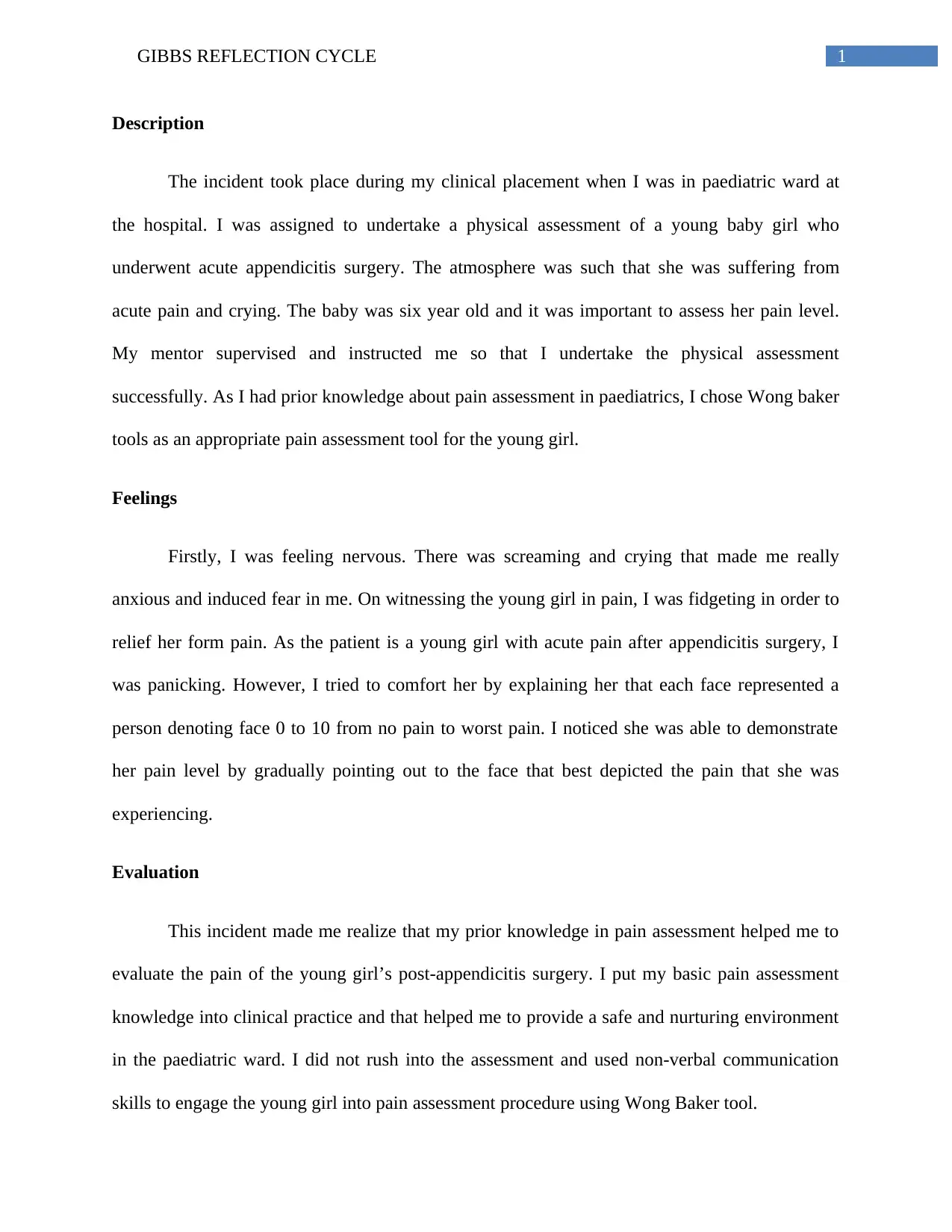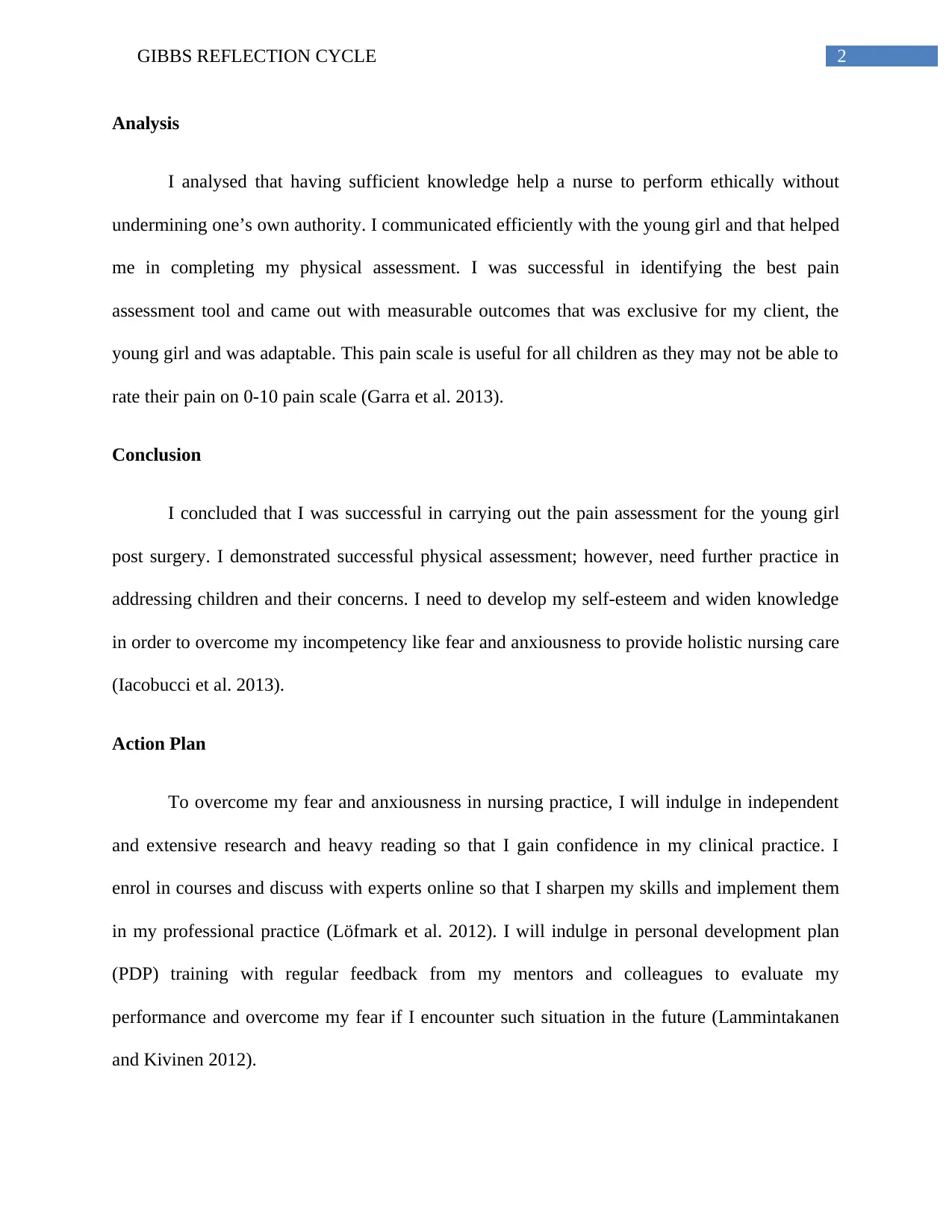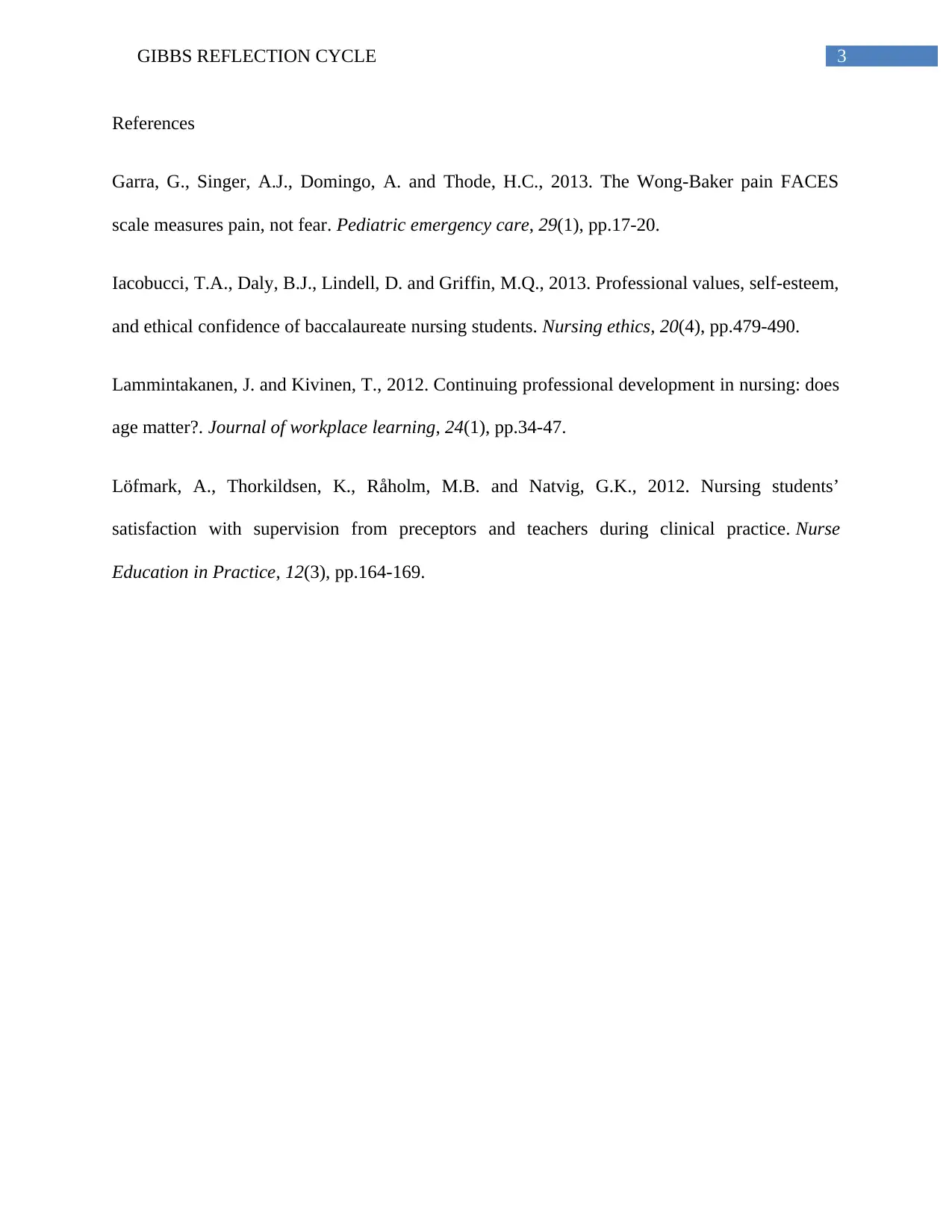Reflection on a Paediatric Pain Assessment Using Gibbs' Model
VerifiedAdded on 2023/06/11
|4
|770
|292
Journal and Reflective Writing
AI Summary
This document presents a reflective account of a clinical experience involving the pain assessment of a six-year-old girl post-appendicitis surgery, utilizing Gibbs' Reflective Cycle. The reflection encompasses the initial feelings of nervousness and anxiety due to the child's distress, followed by an evaluation of the successful application of prior knowledge in pain assessment using the Wong-Baker FACES scale. The analysis highlights the importance of effective communication and ethical practice in nursing. The conclusion acknowledges the success in performing the assessment while identifying areas for improvement, such as managing personal anxiety and enhancing skills in addressing children's concerns. The action plan outlines strategies for professional development, including independent research, online courses, and participation in a personal development plan with regular feedback to build confidence and competence in future clinical practice. This reflective piece emphasizes the value of continuous learning and self-improvement in providing holistic nursing care.
1 out of 4











![[object Object]](/_next/static/media/star-bottom.7253800d.svg)